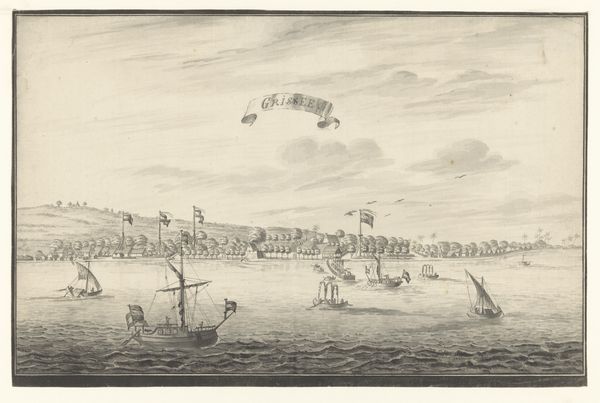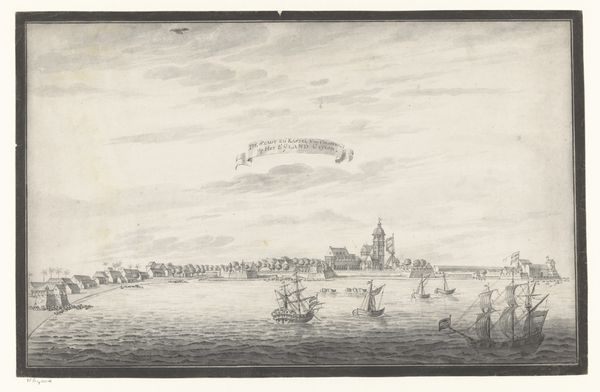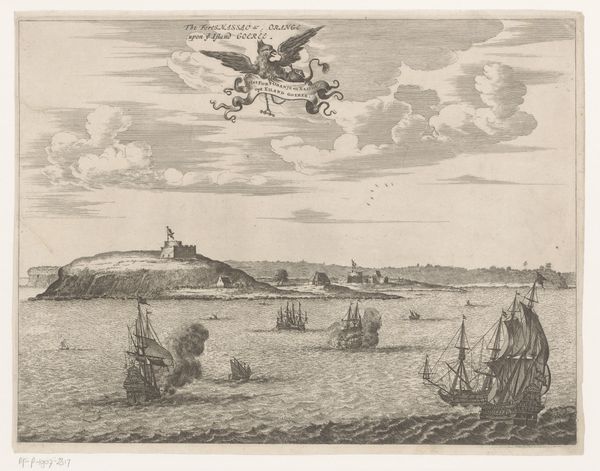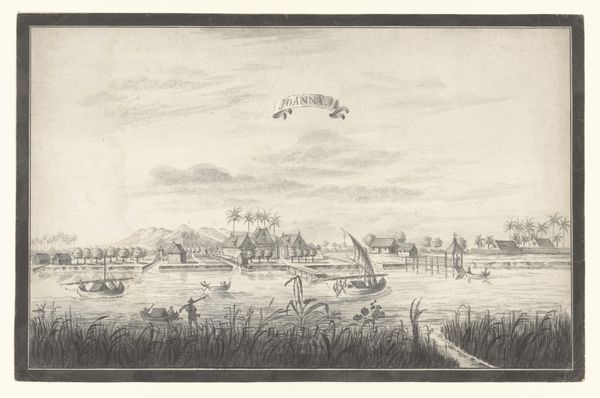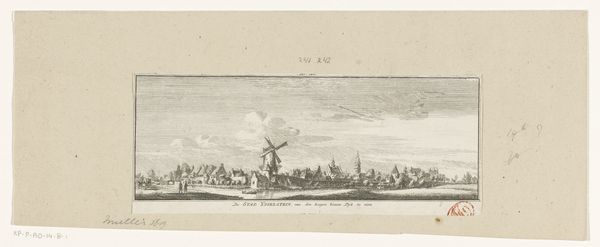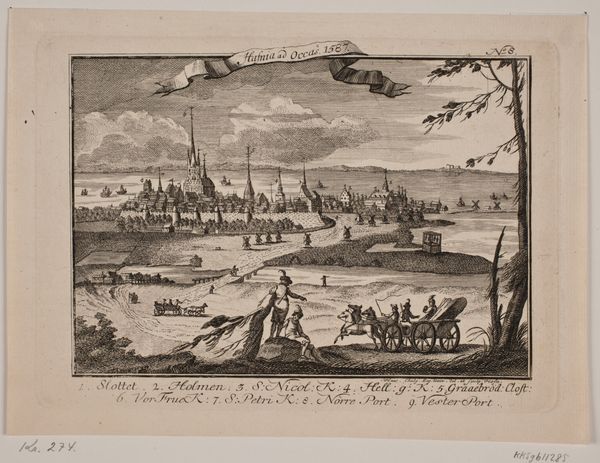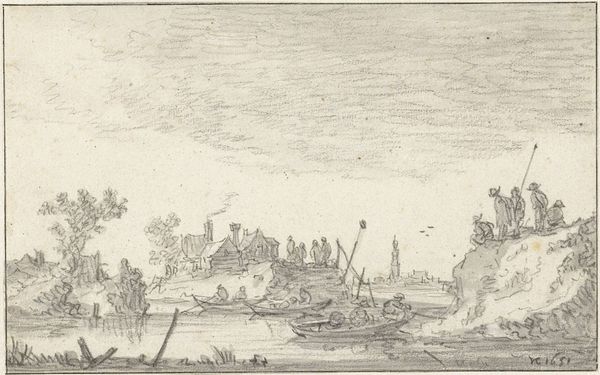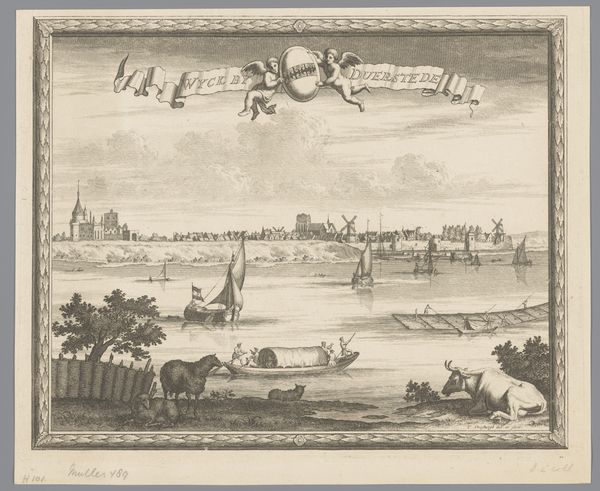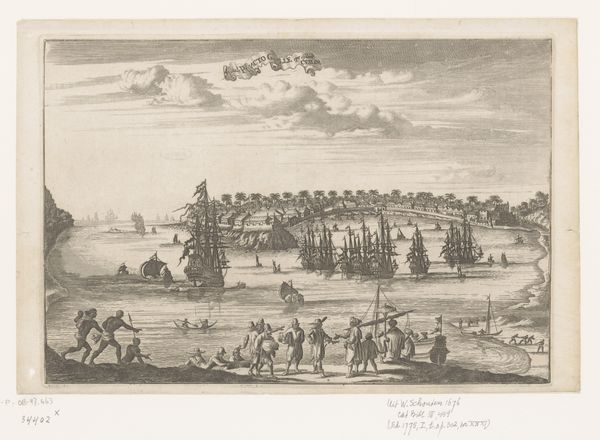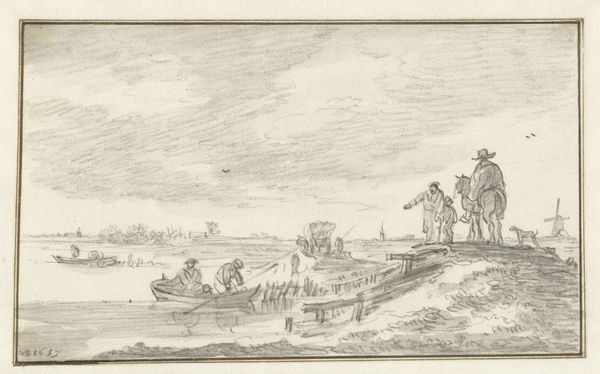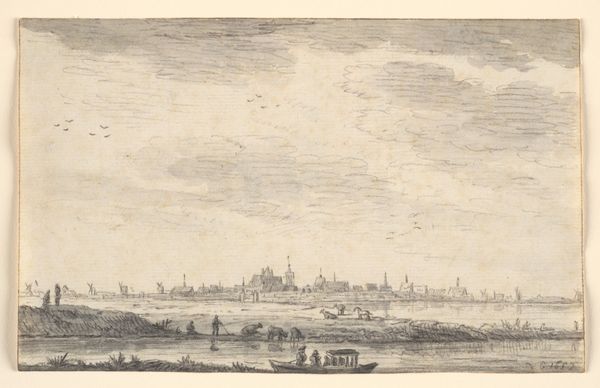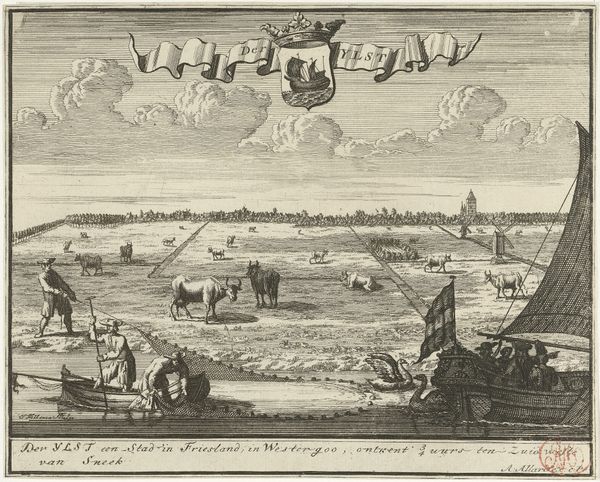
drawing, ink, pen
#
drawing
#
dutch-golden-age
#
asian-art
#
old engraving style
#
landscape
#
ink
#
pen-ink sketch
#
orientalism
#
pen
Dimensions: height 312 mm, width 471 mm
Copyright: Rijks Museum: Open Domain
Curator: A first impression—the muted palette lends a certain tranquility, almost dreamlike quality, to this pen and ink drawing. Editor: Indeed. We’re looking at “Gezicht op Tegal,” or “View of Tegal,” attributed to A. de Nelly and created sometime between 1762 and 1783. It offers a fascinating depiction of the port town in Java. Curator: The composition is meticulously arranged. Observe how the artist uses receding planes to create depth, guiding the eye from the figures in the foreground to the town’s buildings, rendered in meticulous detail against that pale sky. Semiotically, what might we surmise from the prominence of that "Tegal" banner floating above the scene? Is it merely descriptive, or is it aspirational, imbuing the landscape with symbolic weight? Editor: I would say it is an interesting interplay of the literal and representational, given that, historically, Tegal was an important trading post for the Dutch East India Company. The imagery subtly asserts Dutch presence and perhaps projects their control, both economic and territorial. The sketch shows how power dynamics and imperial ambitions played out. Note how orderly and civilized it looks, unlike stereotypical imagery associated with colonized landscapes. Curator: Absolutely. I would call attention to the line work – consistently delicate, precise in capturing the architectural elements but dissolving in looser marks toward the distant horizon line. The contrast heightens the sense of receding space while drawing attention back to structural stability within the fortified buildings themselves. Editor: Beyond the artistic execution, consider its broader context within Orientalist art of that time. It romanticizes a faraway locale for European consumption, influencing perceptions, both visual and intellectual. How this seemingly placid river scene was received back then, when the colony was under great economic oppression is what makes this particular piece quite relevant today. Curator: I find the interplay between objective observation and stylistic interpretation compelling—evidence, perhaps, of a moment of artistic expression informed by prevailing modes of representation and perspective. Editor: Precisely. Reflecting on the sociopolitical and historical implications embedded within, we start appreciating the nuanced dialog this drawing sparks.
Comments
No comments
Be the first to comment and join the conversation on the ultimate creative platform.
